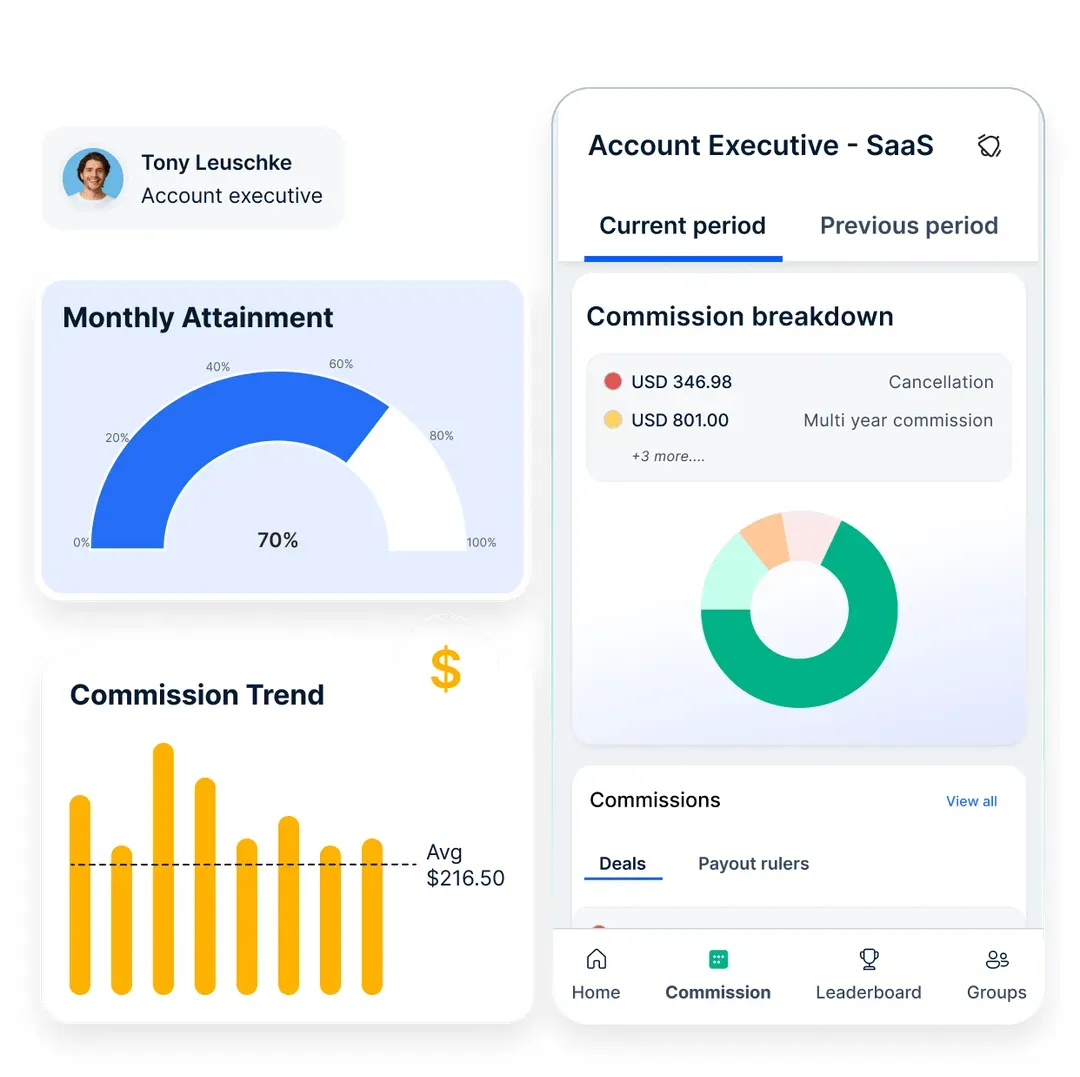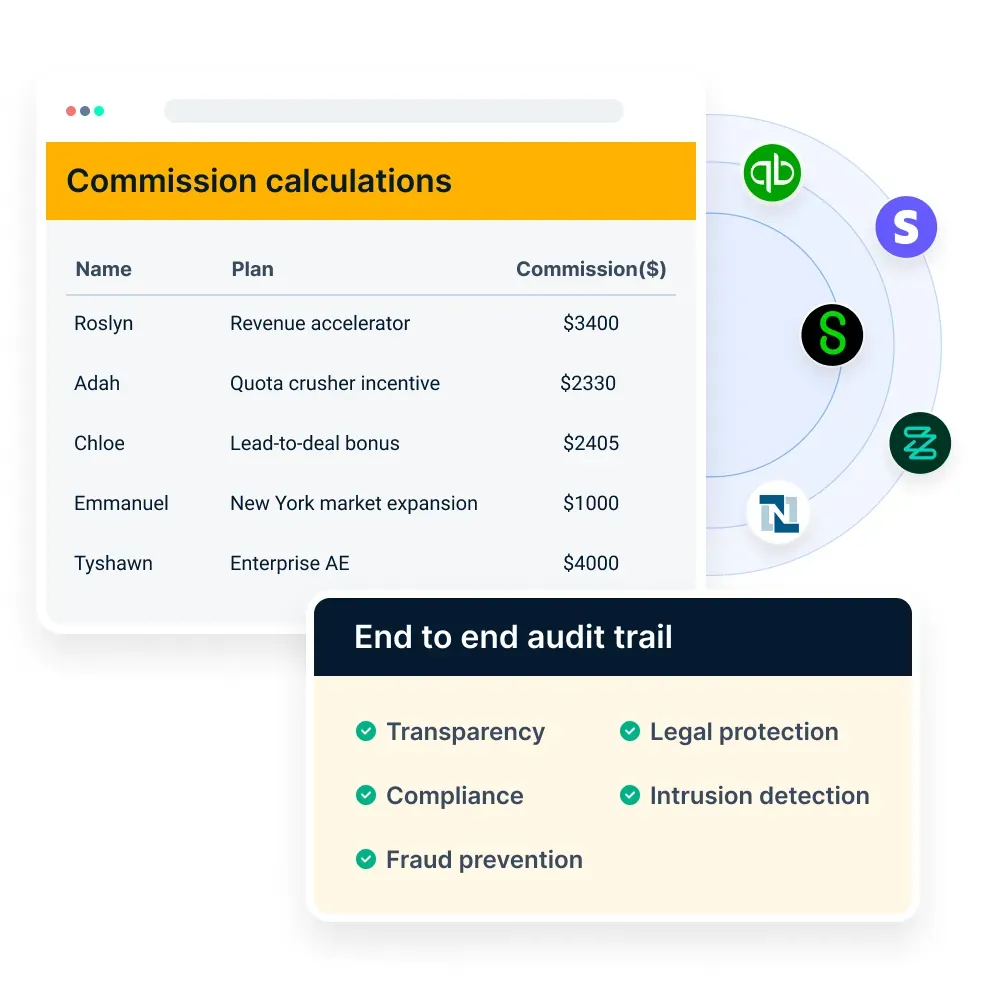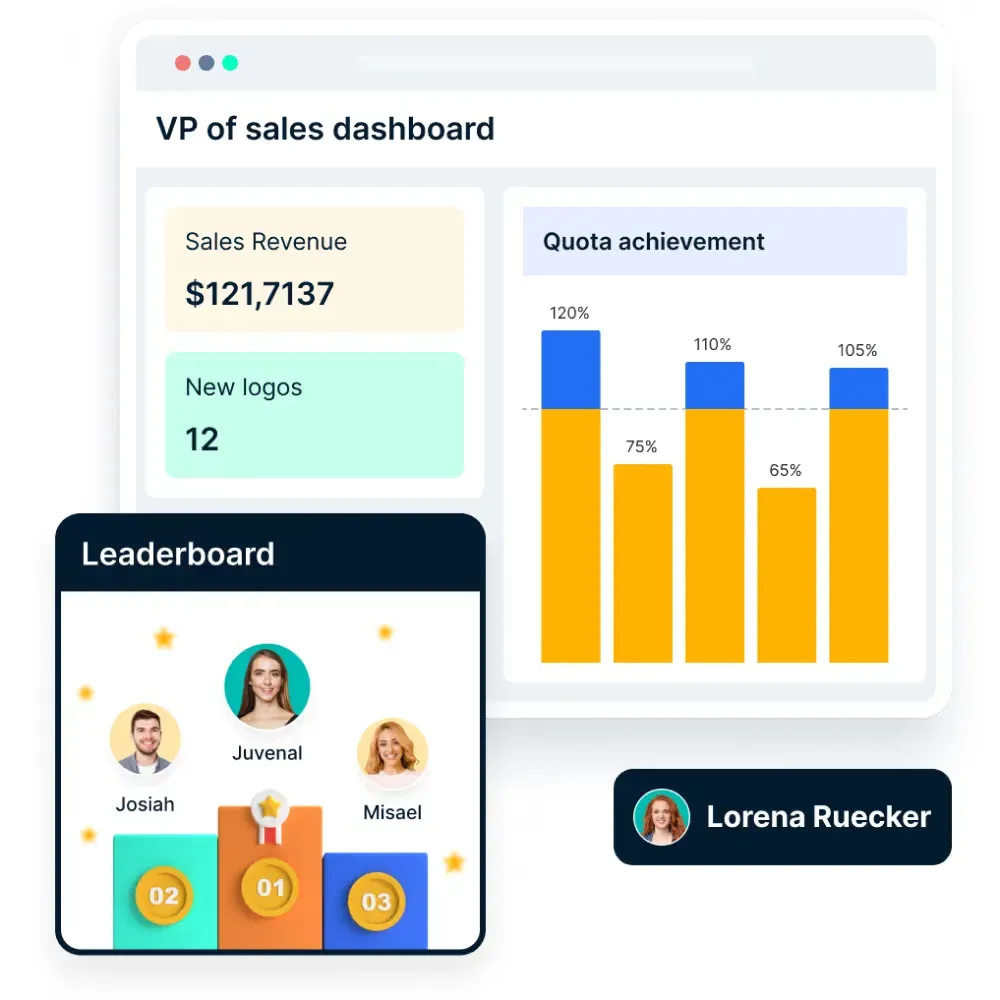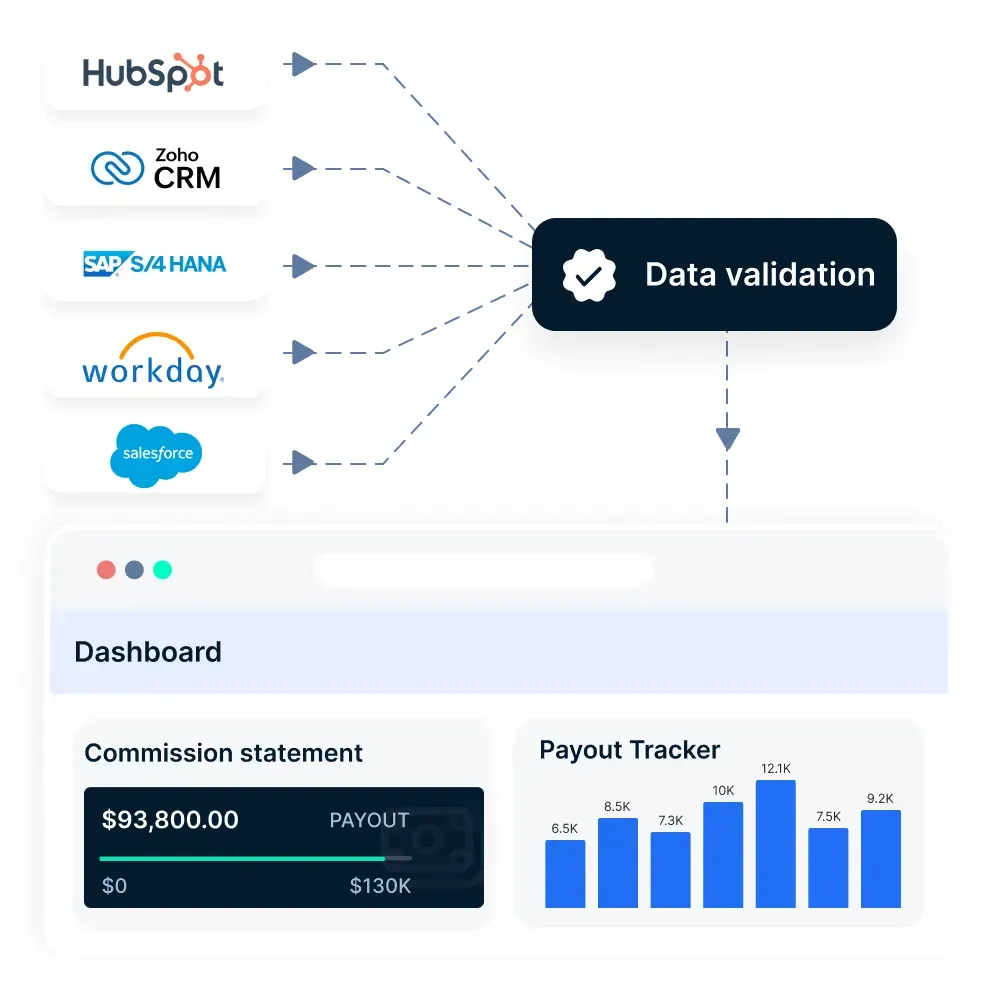How to Choose a Sales Performance Management Software: Must Have Features
Discover how to choose the right sales performance management software with key sales performance management software features that drive efficiency, automate commissions, and optimize sales team performance.
On this page
Sales teams work best with clear goals, structured incentives, and access to real-time data. Sales performance management software helps organizations track progress, reward achievements, and improve decision-making with automation and insights. Relying on manual tracking or disconnected spreadsheets often leads to errors and inefficiencies, making a dedicated platform essential for optimizing sales operations.
A strong sales performance management platform provides structured tools for territory planning, quota management, incentive compensation, and forecasting.
Gartner defines these platforms as solutions that automate and unify back-office sales processes, improving efficiency and ensuring accurate compensation. Businesses can use these tools to gain visibility into sales performance, helping leaders refine strategies and sales teams stay motivated.
Choosing the right sales performance management software requires a close look at its capabilities. The following sales performance management software features help organizations build stronger sales teams, improve accountability, and create effective compensation structures.
Challenges faced by sales performance management solution providers
Here are the most important business challenges faced by sales performance management solution providers.
1. Non-compliant systems
When it comes to regulatory needs, homegrown systems can quickly become non-compliant. Having the right controls and solutions in place can mean a lot - from avoiding delayed payments to making hefty payments for non-compliance.
New regulations can also affect the sales organization by impacting incentive pay. These regulations may vary from state to state.
An SPM platform that offers features such as effective dating, efficient management of personal information, and more can effectively plug these compliance challenges.
2. Lack of insight into spending and performance
Home-grown systems and manual solutions do not allow you to leverage past, current, and projected performance data to optimize various sales functions.
How sales spend drives performance, which is essential information that every sales leader needs to be cued in.
Additionally, this is time-sensitive. These insights must be made available to the right stakeholders before the relevant sales period is passed.
Modern SPM platforms offer AI-recommended changes and model them before making them, allowing users to target the desired changes as required.
3. Inability to handle complexity and business maturity
In time, businesses outgrow manual solutions that do not lend themselves to complex eligibility or crediting rules.
For large sales teams, ensuring effective dates are accurate across the system is virtually impossible using manual solutions. Quotas, territory allocation, and rules of engagement further complicate matters.
In the end, homegrown solutions, at best, only cater to current needs and will not lend themselves to the needs of a more complex and mature business.
4. Higher-than-optimum time-to-market
Organizations start their planning cycles anew each year. Compensation plans need to be designed, territories allocated, quotas set, and salespeople communicated as soon as possible.
Sales results are directly impacted by the time it takes to deliver this information. Manual solutions make completing planning, releasing the plans, and tracking the process's completeness extremely difficult.
SPM platforms make these tasks simple for both comp admins and sales representatives.
5. Erosion of transparency and trust
Your sales team is a key asset you do not want to lose. And transparency is crucial to earning their trust regarding crediting and payments. Salespeople who do not trust the internal processes are at a high risk of experiencing and spreading low employee morale and sales attrition.
Manual solutions that offer only limited details and infrequent crediting often do nothing to guard against these troubles.
SPM platforms, on the other hand, ensure frequent crediting and complete transparency, often right through your sales reps’ mobiles, allowing them to assess their current and potential performance readily.
If your organization faces any of these challenges, and sales performance management platform may be just what you need. Here are some of the key capabilities a good SPM platform can and should deliver.

Drive Sales Performance with AI-Powered Insights
Compass gives you real-time analytics, automated incentives, and gamification to boost sales productivity. Track progress, optimize strategies, and keep your team engaged—all in one platform.
Start Optimizing Today
10 Key features to look for in a sales performance management software solution
Choosing the right sales performance management software requires a clear understanding of the essential features that drive efficiency, improve sales execution, and ensure accurate incentive management. A well-equipped platform should automate sales processes, provide real-time insights, and optimize team performance.
Here are the key sales performance management software features to look for:
1. Artificial intelligence and machine learning capabilities
With automation comes the capability to use your data better and perform continuous analysis. With AI/ML algorithms' application to such data, you open doors to endless insights and value addition.
The best SPM platforms help you to use your data even more effectively using intelligent technology. Once each part of your organization has been automated, it is time to add intelligent technology to enable data analysis and continuous learning to enable sales strategy planning.
2. Performance analysis and optimization
To enable continuous analysis, real-time insights are necessary. Your SPM platform should offer real-time or near-real-time analytics for each of your sales functions. This will enable you to optimize your planning.
Industry pay and performance data is something else that a good SPM platform should be able to offer you. This data can then be used to benchmark incentives and ensure that your pay is competitive and that any pay gaps are eliminated.
3. Quota planning & management
Salesforce published its third annual State of Sales report last year and found that 57% of sales reps did not meet their quotas in 2019. This indicates that it is important to get your quotas right when you assign them to your reps.
Your SPM solution should offer you multiple quota planning options, including top-down and bottom-up quota setting.
Moreover, as several diverse factors affect quota planning, it should allow you to pull data from multiple sources while setting your quota and applying artificial intelligence to recommend optimal quotas.
4. Territory design and management
Territories are a sensitive subject in sales organizations and can trigger low employee morale and performance.
To ensure your reps do not think their territories have been unfairly assigned, technology can be used to optimize territory design. In fact, such a move results in 30% higher quota attainment, as research has found.
Ideally, your territory design and management solution should be interactive and flexible so as to allow you to design rule-based territories and also integrate them with your quota planning solution. It can often even pull in third-party data to ensure the territories are optimized to help your sales reps succeed.
5. Incentive compensation management (ICM) and accounting
As the biggest driver of sales behavior, compensation structure and getting it right is crucial to your organization. Your ICM solution should ideally aid in optimizing every part of compensation.
This includes plan design, credit assignment, payout calculation, exception handling, and more. It should also help your accounting team stay compliant and easily throw up the data required for commission accounting.
6. All-in-one sales planning
Effective sales planning lies at the heart of your sales organization and is the cornerstone of its success.
Your SPM platform should have sales planning capabilities that allow you to plan for revenue and headcount, accurate team size, coverage, and more. All this should be done while taking growth potential into account by one solution rather than requiring additional sales management tools to get it done.
7. An integrated SPM platform
It is important to ensure that your SPM platform takes a holistic approach to sales management, offering you sales capacity and quota planning to incentive and territory design with possibilities for optimization at every stage.
Besides, your Sales Performance Management solutions vendor should have kept your current and future needs in mind. The platform should be able to scale with your organization and allow for the integration of additional platform solutions.
8. Integration of data across solutions
It is key that you transfer and integrate your data across systems for your organization to perform at a high level.
Automation and streamlining of critical data flows and seamless integration with your other data architecture systems, such as ERP, CRM, HRIS, and more, are critical.
9. Training and certification
A vendor that offers in-depth training and certification to transfer information about best practices and develop your usage skills will prove critical if you are looking to use your SPM platform effectively.
In case you have a large sales team, it may also be required that you look for vendors that offer training by product and through different modes, such as online, in-person, etc.
10. Recognition from key analysts
Selecting a Sales Performance Management solutions vendor can call for research, hours of analysis, demos, and more.
Make this process easier by looking for a vendor that is recognized as a leader by key analysts, such as Gartner, Forrester, and the like. Each analyst represents a certain set of crit and also showcases breach vendors of the strengths and vendors.
Why Compass is the go-to sales performance management platform
When evaluating the best sales performance management software, businesses need a solution that offers automation, real-time analytics, seamless integrations, and robust incentive management. Compass checks all these boxes, making it a top choice for organizations looking to optimize sales performance, streamline compensation processes, and boost team motivation.

Unlike traditional sales performance management platforms, Compass automates commission tracking, incentive calculations, and performance monitoring, eliminating manual errors and ensuring fair and transparent payouts. With AI-powered analytics, businesses gain actionable insights into sales trends, allowing them to refine compensation structures and drive higher performance.

Compass also offers gamification features, including leaderboards and real-time dashboards, to keep sales reps engaged and motivated.

Its seamless integration with CRM, ERP, and payroll systems ensures that sales data flows accurately across all platforms, reducing administrative burden and improving efficiency.
Key capabilities that make Compass the best choice:
- Automated commission tracking to eliminate errors and disputes in sales compensation.
- AI-driven insights that help businesses optimize incentive plans and sales strategies.
- Real-time performance dashboards to keep sales reps and managers informed.
- Customizable incentive structures that align with company goals and revenue targets.
- Seamless integration with CRM, ERP, and payroll systems for accurate data synchronization.
- Instant payout processing to ensure timely commission disbursements.
- Gamification and leaderboards that drive engagement and encourage healthy competition.
- Compliance and audit tracking to maintain transparency in commission structures.
Compass is designed to simplify sales performance management, helping businesses maximize productivity, retain top talent, and drive consistent revenue growth. With its automation, intelligence, and engagement-focused features, Compass is the ideal solution for businesses looking to enhance sales effectiveness and team motivation.
Take control of your sales performance. Get started with Compass today!
Conclusion
Selecting the right sales performance management software ensures that sales teams stay focused, motivated, and aligned with business goals. A strong platform should automate commission tracking, provide real-time insights, and support customizable incentive structures. Investing in the right solution eliminates manual errors, improves efficiency, and helps sales teams reach their full potential.
Compass offers a complete sales performance management platform with AI-powered analytics, automated compensation tracking, and seamless integrations. With its user-friendly interface and data-driven approach, Compass helps businesses maximize sales performance and drive revenue growth effortlessly.













